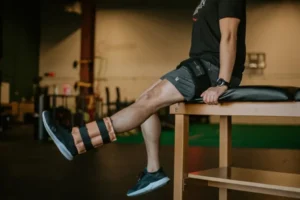
Call (239) 919-3510
Call (239) 919-3510

One of the most common complaints we, as physical therapists (PTs), hear from patients are issues with arthritis. Arthritis, by definition, is inflammation of a joint. This can occur in any joint of our body regardless of size or location and can span from very minor to extremely limiting. Although many types of arthritis occur within the body, osteoarthritis (OA) is the most common form of arthritis seen by PTs.
OA refers to damage that occurs in the joints over time. This is the traditional “wear and tear” damage that people refer to as they age. Over time, the tissues within a joint, whether cartilage, ligaments, etc., break down and become eliminated as a support structure for the joint. The common “bone on bone” expression comes from the occurring. In the knee, for example, the meniscus acts as a shock absorber for the joint. When this wears away, the distance between the bones of the joint narrows, causing more friction/inflammation to occur, ultimately leading to breakdown of the joint. In other words, a normal joint has two bones moving evenly on one another. As one or both bones deteriorate, the areas that move upon one another become jagged rather than smooth. This change in the bone is what causes the “wear and tear” described above.
Although this is quite common in patients, care for the condition may vary depending on the site of the OA. Because of the variety of potential locations of OA (i.e., upper extremity vs. lower extremity), care can be provided differently. A basic principle that is always applicable when dealing with OA is to remember “motion is lotion.” This refers to the stiffness and pain that can be associated with OA. Moving the joint regularly and consistently diminishes these sensations and allows for improved mobility. This can be what contributes to the “morning stiffness” associated with OA due to the lack of mobility while sleeping. The best treatment for OA is to physically move your joints.
Stretching, strengthening, and mobility all play a key role in management of pain and symptoms related to arthritis. As stated above, simply moving is the best way to alleviate these issues. While it will not cure the condition, it may allow more tolerance to desired activities.
The following is a brief introduction to a few common OA conditions and the basic mobility exercises that can be performed daily to manage symptoms.
• Cervical (neck) mobility – Start in an upright posture with the shoulders relaxed. Move the head in a “yes” manner, looking up to the ceiling then down to the floor. Then, move the head in a “no” manner, turning the head to the right then to the
left. Finally, tilt the head to one side, bringing the ear towards the shoulder on the same side. Then move to the other side. All of these motions should be done without changing the sitting or standing positioning which you start in. This can be repeated
10-20 times and should be done in a slow and controlled manner.
• Shoulder mobility – Start in an upright posture with the shoulders relaxed. With the arms straight and in a neutral position (thumb up toward the ceiling), raise the arms straight in front of you as high as tolerable, then slowly return to the starting
position. Then, perform the same motion to the side. This can be repeated 10-20 times and should be done in a slow and controlled manner.
• Lumbar (low back) mobility – Start in a seated position on a supported surface. While maintaining core stability, lean the trunk forwards to a comfortable position. Then, return to the start position. This can be repeated 10-20 times and should be
done in a slow and controlled manner. This can also be performed by moving backward, leaning to one side, and rotating the trunk to one side. It is important only to perform motion in one direction at a time. You do not want to move through the full
range of motion together.
• Knee mobility – Start by lying on your back on a stable surface. One at a time, place your foot flat on the surface and slowly slide the heel towards the buttocks until a stretch is felt. This can be held for 5-10 seconds, then slide the foot back to the starting position. Then, repeat on the other leg. Another way to complete it is to sit in a supported chair with the feet flat on the ground. Once at a time, slowly slide the heel back towards the chair until a stretch is felt. This can be held for 5-10 seconds, then slide the foot back to the starting position. Then, repeat on the other leg.
This can be repeated 10-20 times in each position and should be done in a slow and controlled manner.
The bulleted list above is a brief introduction to joint mobility that may benefit those diagnosed with osteoarthritis. While this is certainly not an all-encompassing list, there are many other exercises that could have been included that would also be beneficial for patients with the OA diagnosis. If these mobility exercises do not change the condition or worsen any issues, stop immediately. I want to welcome anybody dealing with arthritic issues to seek medical intervention for treatment and recommend considering physical therapy as PTs are considered the “movement experts” in the healthcare field. Upon evaluation of the condition, a licensed PT will be able to recommend a plan of care designed specifically to meet your needs and goals to help return you to the level of independence you desire.
Email: Info@naplespremierpt.com
Phone: (239)919-3510
Website: www.Naplespremierpt.com